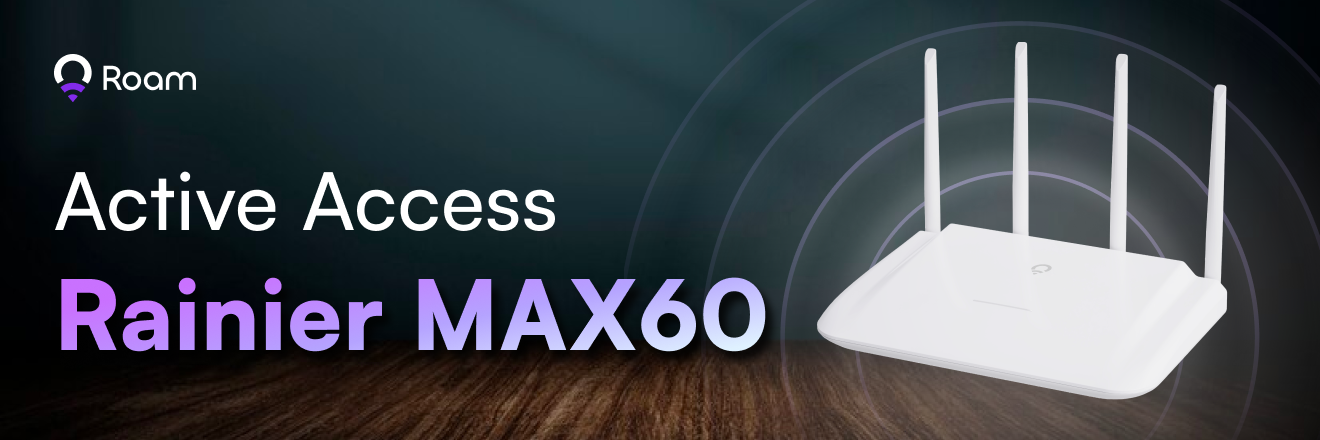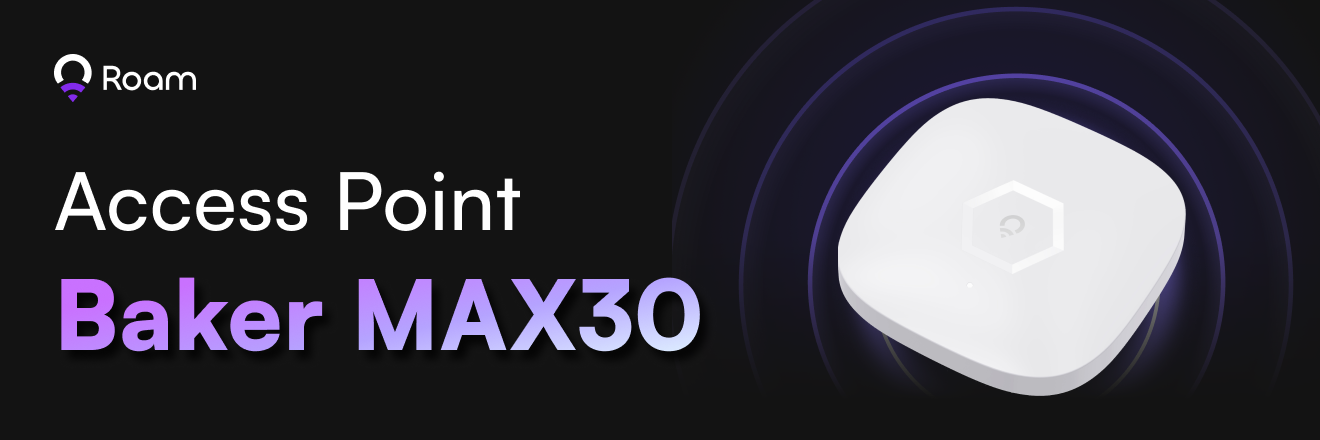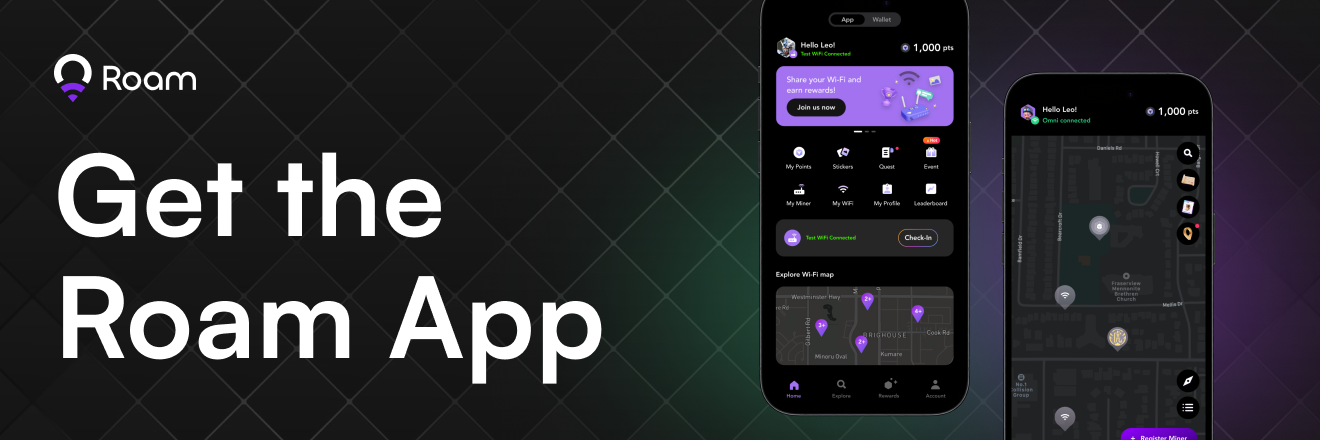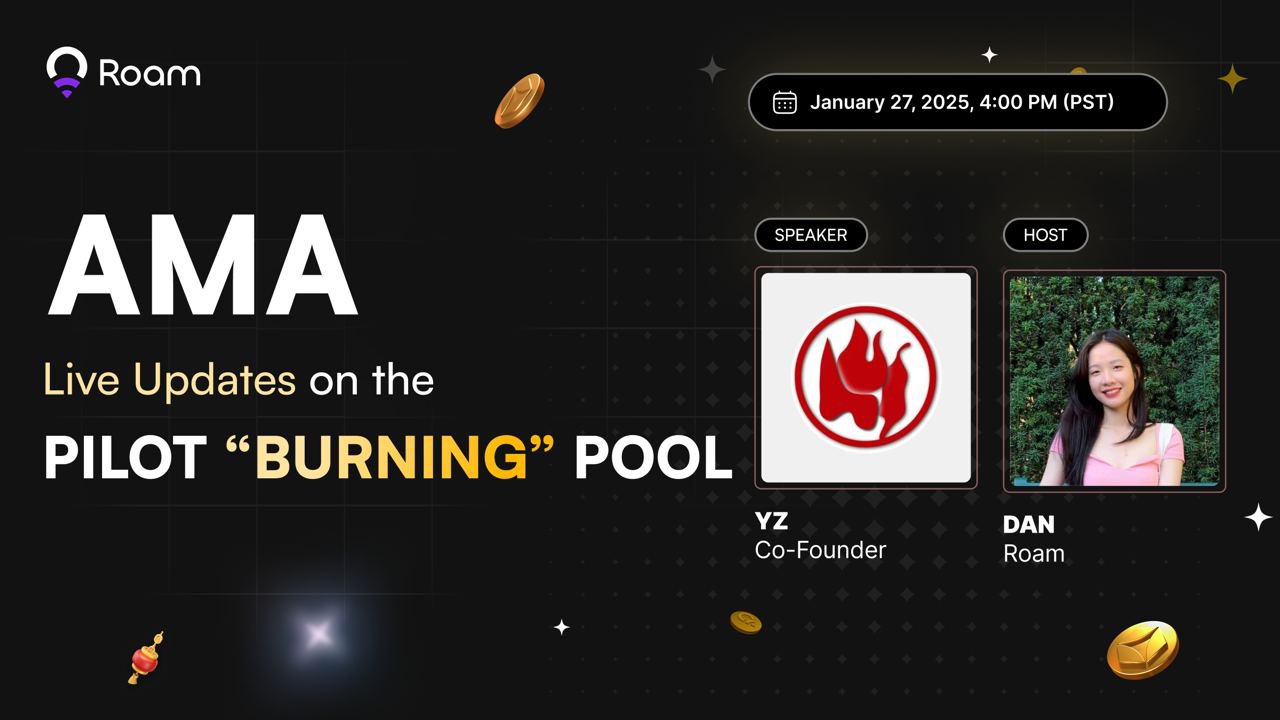With the rapid development of blockchain technology across various sectors, decentralized physical networks (DePIN) have become a popular concept. Analysts consider DePIN as a new trend of crypto applications in the real world, and it has become a very promising sector. Roam is building an open wireless network that provides free, secure, and seamless wireless access experiences to people around the globe. By leveraging crypto incentives, Roam kickstarts the supply side of its network, generating significant amounts of data, particularly location and time data. Initially, many projects in this sector developed their own Layer 1 (L1) networks, with users mining their native tokens. However, a recent trend involves launching tokens on other blockchain L1s like Solana, IoTeX, Peaq, and others. The question then arises: Will these DePIN projects operate like other decentralized applications (dApps)? What’s the best way to foster growth and deliver value to users?
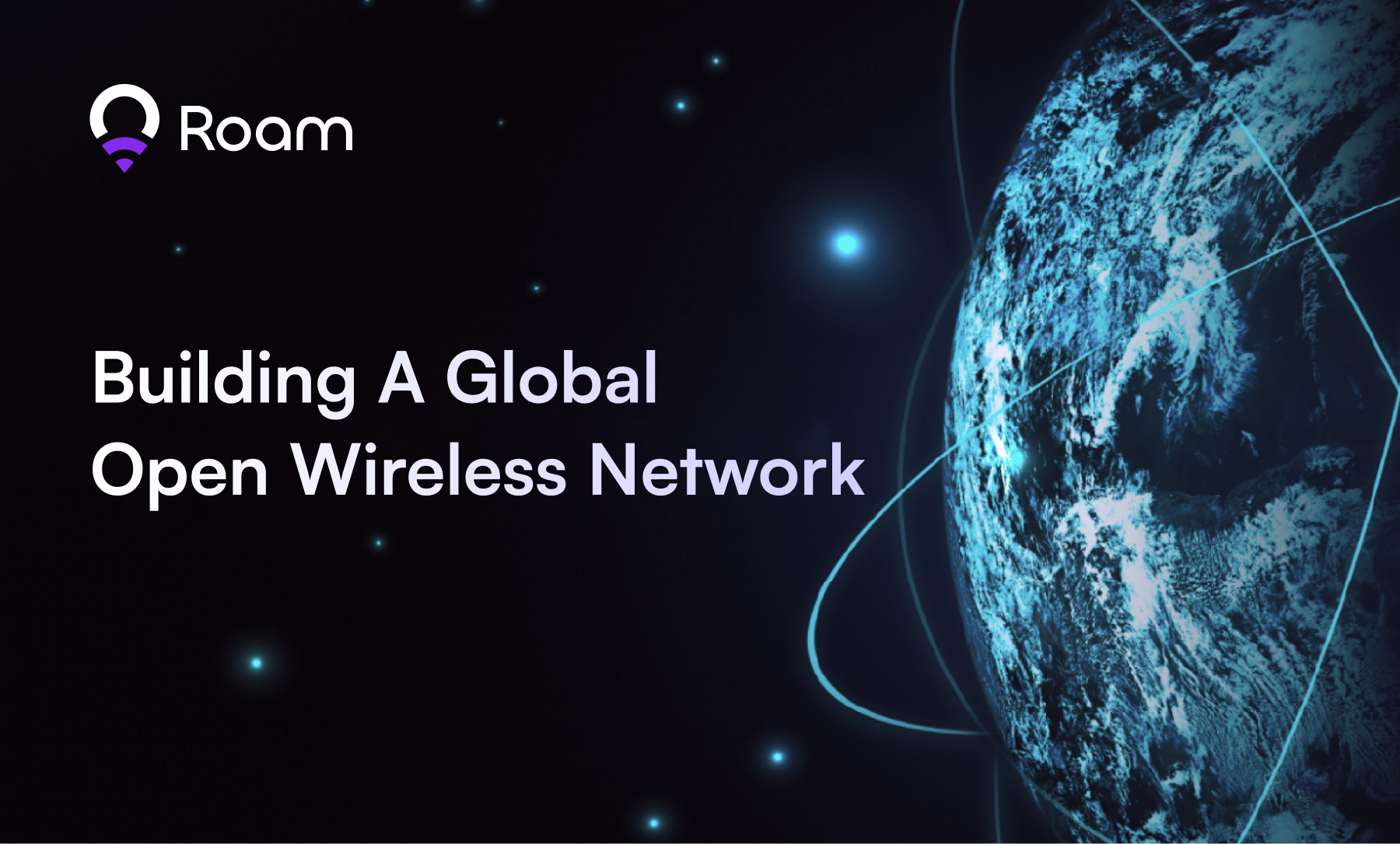
Roam: Next Generation Wireless Connectivity
WiFi and cellular networks are the two dominant methods of wireless communication today. Currently, WiFi carries around 74% traffic for the mobile network, while the remaining 26% is managed by the cellular network. However, both of them are facing challenges. Most public WiFi networks are free but often not secure and require repetitive logins, failing to offer the seamless user experience that cellular networks provide. Meanwhile, the biggest challenge with cellular networks is the high cost, particularly when used for international travel. In addition, a seamless user experience cannot be reached among WiFi and cellular networks.
Roam started by building a decentralized global WiFi roaming network that provides seamless, secure, and borderless internet connectivity. By utilizing OpenRoaming™ technology, Decentralized Identifiers (DIDs), and Verifiable Credentials (VCs), Roam enables users to connect to WiFi without the need for multiple credentials or lengthy login procedures. This decentralized approach enhances privacy and security, allowing users to roam across networks freely while maintaining a consistent and secure connection. Roam’s network extends beyond individuals to include IoT devices and AI, offering a versatile solution for today’s interconnected world.
To date, Roam has around 1,000,000 app users spanning over 190 countries, giving them access to more than 3.5 million OpenRoaming™ nodes and more than 600,000 nodes added by its users. Roam has quickly become the third largest DePIN network, according to Depinscan.io, highlighting Roam’s role in creating a more connected and collaborative network infrastructure across the globe.
In the process of solving the WiFi connectivity issue, Roam provides free global eSIM packages to people who help build and validate the network. The cash flow generated by this network fuels free cellular access for its users in 196 countries, kicking off the DePIN Flywheel and driving network growth.
Beyond the Existing DePIN Model
The existing DePIN model typically is an application built on a blockchain L1, and the prominent feature is connecting a lot of devices with the hope that the network effect will pop up once it scales. While Roam expands its network, it is believed that an upgrade to the existing DePIN operation model is needed.
First of all, the focus of DePIN shall not be merely on connecting devices, instead, it should focus on connecting people. The history of the Internet of Things (IoT) shows that although connected device networks have some value, that value is minimal and localized unless they can directly connect users. Secondly, DePIN should reach users through the services it provides, in most cases, these services do not directly relate to the blockchain itself. In other words, the service shall be blockchain agnostic and the Web3 technologies are the only tools employed by the project. Thirdly, DePIN fundamentally processes specific types of data, which can be either directly obtained from devices or generated through interactions between users and devices.
As a result, a DePIN project shall not be considered as a dApp operating on top of the blockchain L1, where its token is issued. Instead, it functions in parallel with blockchain L1: both build a network using token incentives, maintain a data ledger, and foster a community to develop applications on top of the built network. In this case, we call some DePIN projects operating like Physical L1s. If blockchain L1 is a highway, with applications are buses and users are passengers, Physical L1s are like telecom networks, power grids, etc. They connect the users via their services, and support highways by all means, like telecom networks give the traffic light control and the power grid gives the roadway lighting. However, these networks also rely on highways (blockchain L1s), without them, the materials cannot be transported and nothing could be built.
Roam Operates As a Telecom Data Layer
The concept of a Physical Layer 1 (L1) involves a network built from connected devices that process specific types of data, allowing applications to be built on top of it to serve users. This model serves as an essential extension of DePIN. As the telecom data layer, Roam is the first and ideal example of a Physical L1. Roam and a Blockchain L1 have the following similarities:
a) Build a node network to maintain a data ledger
Roam builds the network with numerous Roam mining nodes, each of them provides the network services to the users and generates the location and time data while integrating with users. The ledger of these data is maintained both off-chain in backend nodes and on-chain like Solana and other collaborative blockchains via a data cross-chain bridge. In comparison, a blockchain L1 has network nodes that handle and store on-chain transaction data, and the ledger of the data is the blockchain L1 itself.
Building a network is complex and requires infrastructure, applications, and users. Historically, this sector has faced challenges with data transparency and exchange. As a Physical Layer 1, Roam addresses these issues, offering greater benefits to its partners and users. This is evident in the contrast between the Internet and the Internet of Things (IoT). While the internet provides free and open data flow, IoT systems often restrict data within their ecosystems, limiting their utility. This lack of data sharing hinders IoT’s growth compared to the internet. Acknowledging the issue, Roam seeks to break down these information barriers between different types of hardware by using decentralization.
b) Grow the network via token incentive
Roam, like blockchain L1s, uses a “mining” process to attract users to help build the network and the applications on top of it.
Token incentives are used to build the supply side of the network. Roam node providers supply wireless network services, while Roam network validators physically travel to test and validate the network’s connectivity. Regular blockchain L1 nodes conduct work to package transaction data and produce blocks. With some blockchains, liquidity providers perform a lot of activities to facilitate transactions and improve user experiences. These roles shall all be rewarded with tokens. With Roam, since the network is able to produce cash income, Roam Growth Product also offers a yield earning opportunity for node suppliers, while a token-based yield earning product is also common with blockchain L1 for their node builders, particularly PoS node builders, like Ethereum.
Roam Discovery acts as an incubator, facilitating the usage of Roam’s location and time data ledger for new applications, including SocialFi, GameFi, and other DePIN projects. For example, Roam’s network validators reporting local weather conditions during Check-Ins could significantly enhance weather forecasts. Most blockchain L1 has their grant or ecosystem growth programs as well. Essentially, both Physical L1 and blockchain L1 will issue tokens to cultivate the usage of their data ledger to allow them to monetize these data via transaction fees or gas fees.
c) Community-based growth
Community is the key to growth. Roam introduces a completely new operational model for telecom service providers. Traditionally, telecom companies operate under a pay-to-use model, in which builders loan money from banks and users pay fees to access services. Then the fee collected is used to pay off the loan and support the future buildout. Roam changed it fundamentally: no fee will be collected, and the builders enjoy free services globally. By deploying their WiFi OpenRoaming™ nodes or validating the network, users receive free services and token rewards in return. The network monetization comes from the businesses that use Roam hardware devices to conduct their services or try to sell goods/services to Roam users. The key to the success of this free-to-use operation model is the community. Without a large and active community, the free-to-use business model cannot be sustainable. This is the same as blockchain L1. Its value is solely determined by whether there is a community to build and develop applications to use the network. Otherwise, it will quickly become a ghost chain.
Roam’s Vision for the Future
Roam is committed to building a next-generation global open wireless network that is free, secure, and seamless by using the Physical L1 approach. Roam aims to create a network that maintains a location and time-based data ledger, expanding both the supply and utilization sides through token incentives, achieving community based management and growth. This approach aligns with Roam’s mission to create a more open and diverse ecosystem that delivers long-term benefits to its users. The movement signifies a new era of innovation, focusing on sustainable growth within the Roam ecosystem.
The Roam ecosystem consists of four strategic modules: Roam Network, Roam Growth Product, Roam Discover, and Roam Community. The Roam Network will concentrate on developing and sustaining the core infrastructure, including the Roam App and network nodes. Roam Growth aims to attract businesses to the platform, encouraging them to create applications that benefit both the companies and Roam builders. Roam Discover is designed to assist individuals in launching their entrepreneurial ventures within the ecosystem and giving them essential support. Roam Community will serve as a platform for members to discuss, share information, and engage with the network. These structural enhancements are intended to promote Roam’s long-term growth and ensure the continuous advancement of its ecosystem.
Roam’s approach to user engagement will shift from traditional reward mechanisms like discounts and airdrops to developing deeper relationships with users by allowing them to become active builders. Instead of simply being passive users, every member will be considered a stakeholder by participating in the network-building process. Roam will not only share the benefits with contributors but also create life-changing opportunities for the entire community.
Conclusion
Roam’s role as Physical Layer 1 is a revolution in the landscape of decentralized networks. Through its commitment to building a robust infrastructure that supports seamless connections among devices, humans, and AI agents, Roam is set to lead the charge in creating a more interconnected and dynamic future. As it evolves, Roam will pave the way for new opportunities, driving sustainable growth and transforming how people connect in the digital world.

